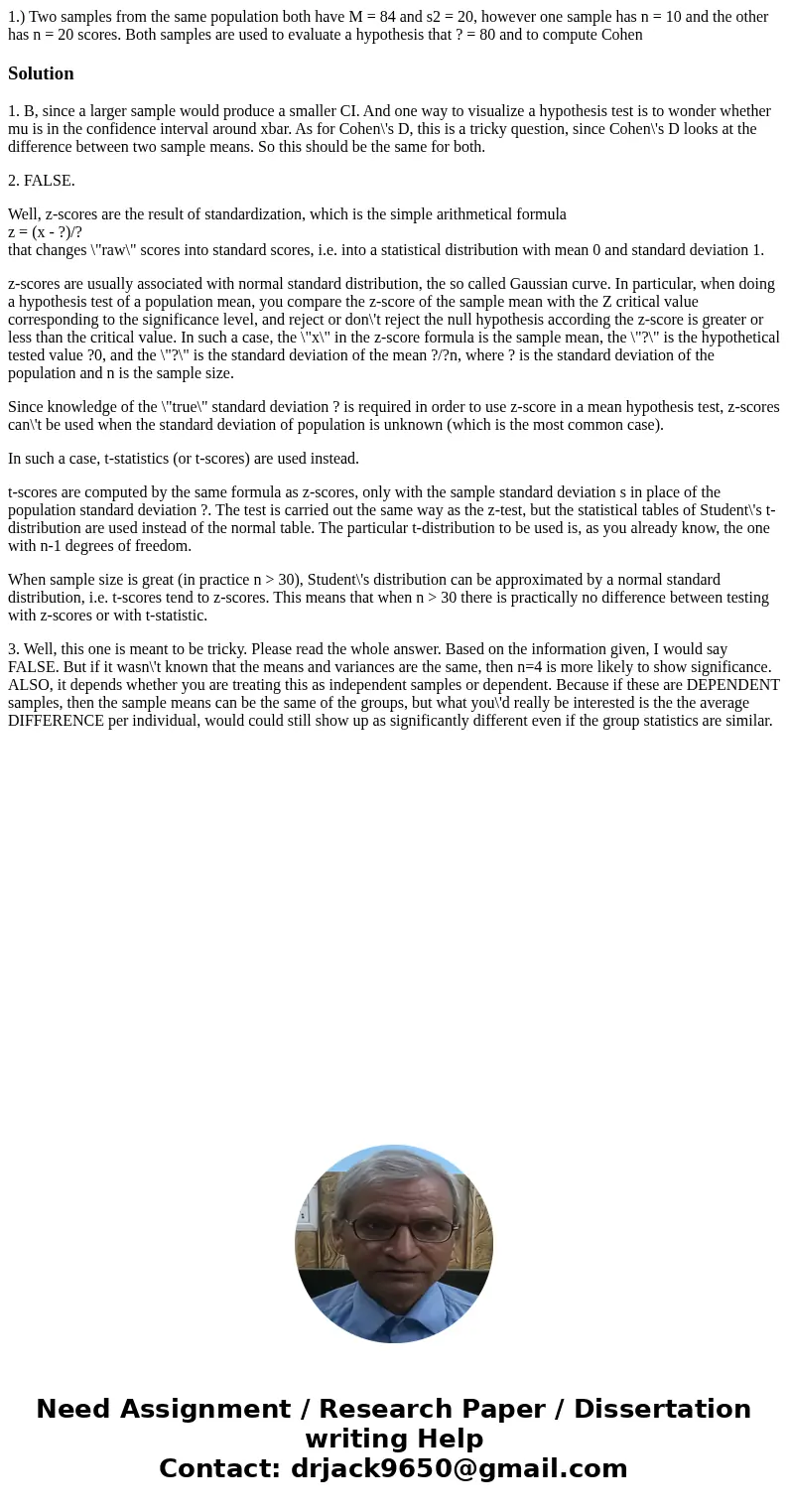1 Two samples from the same population both have M 84 and s
1.) Two samples from the same population both have M = 84 and s2 = 20, however one sample has n = 10 and the other has n = 20 scores. Both samples are used to evaluate a hypothesis that ? = 80 and to compute Cohen
Solution
1. B, since a larger sample would produce a smaller CI. And one way to visualize a hypothesis test is to wonder whether mu is in the confidence interval around xbar. As for Cohen\'s D, this is a tricky question, since Cohen\'s D looks at the difference between two sample means. So this should be the same for both.
2. FALSE.
Well, z-scores are the result of standardization, which is the simple arithmetical formula
z = (x - ?)/?
that changes \"raw\" scores into standard scores, i.e. into a statistical distribution with mean 0 and standard deviation 1.
z-scores are usually associated with normal standard distribution, the so called Gaussian curve. In particular, when doing a hypothesis test of a population mean, you compare the z-score of the sample mean with the Z critical value corresponding to the significance level, and reject or don\'t reject the null hypothesis according the z-score is greater or less than the critical value. In such a case, the \"x\" in the z-score formula is the sample mean, the \"?\" is the hypothetical tested value ?0, and the \"?\" is the standard deviation of the mean ?/?n, where ? is the standard deviation of the population and n is the sample size.
Since knowledge of the \"true\" standard deviation ? is required in order to use z-score in a mean hypothesis test, z-scores can\'t be used when the standard deviation of population is unknown (which is the most common case).
In such a case, t-statistics (or t-scores) are used instead.
t-scores are computed by the same formula as z-scores, only with the sample standard deviation s in place of the population standard deviation ?. The test is carried out the same way as the z-test, but the statistical tables of Student\'s t-distribution are used instead of the normal table. The particular t-distribution to be used is, as you already know, the one with n-1 degrees of freedom.
When sample size is great (in practice n > 30), Student\'s distribution can be approximated by a normal standard distribution, i.e. t-scores tend to z-scores. This means that when n > 30 there is practically no difference between testing with z-scores or with t-statistic.
3. Well, this one is meant to be tricky. Please read the whole answer. Based on the information given, I would say FALSE. But if it wasn\'t known that the means and variances are the same, then n=4 is more likely to show significance. ALSO, it depends whether you are treating this as independent samples or dependent. Because if these are DEPENDENT samples, then the sample means can be the same of the groups, but what you\'d really be interested is the the average DIFFERENCE per individual, would could still show up as significantly different even if the group statistics are similar.

 Homework Sourse
Homework Sourse